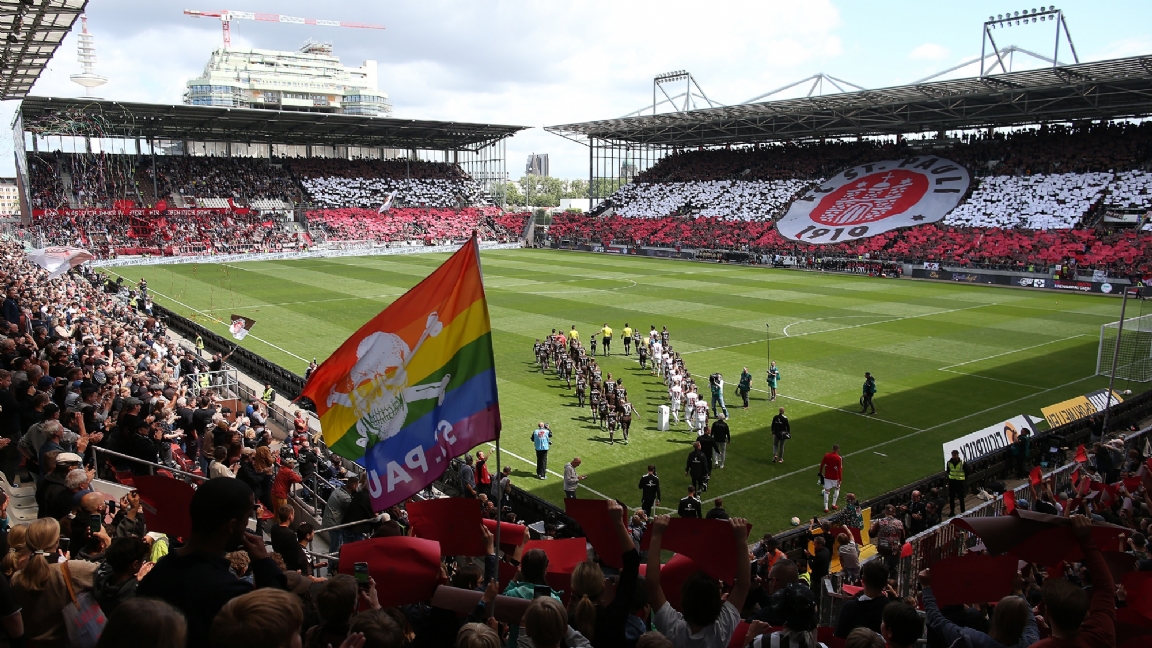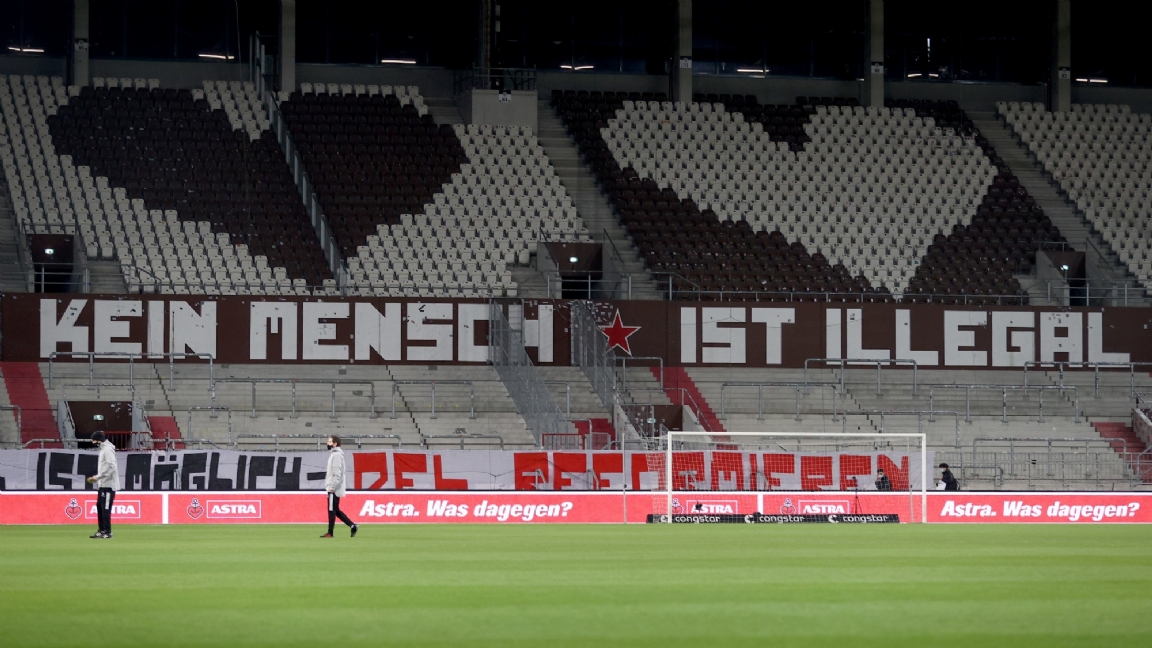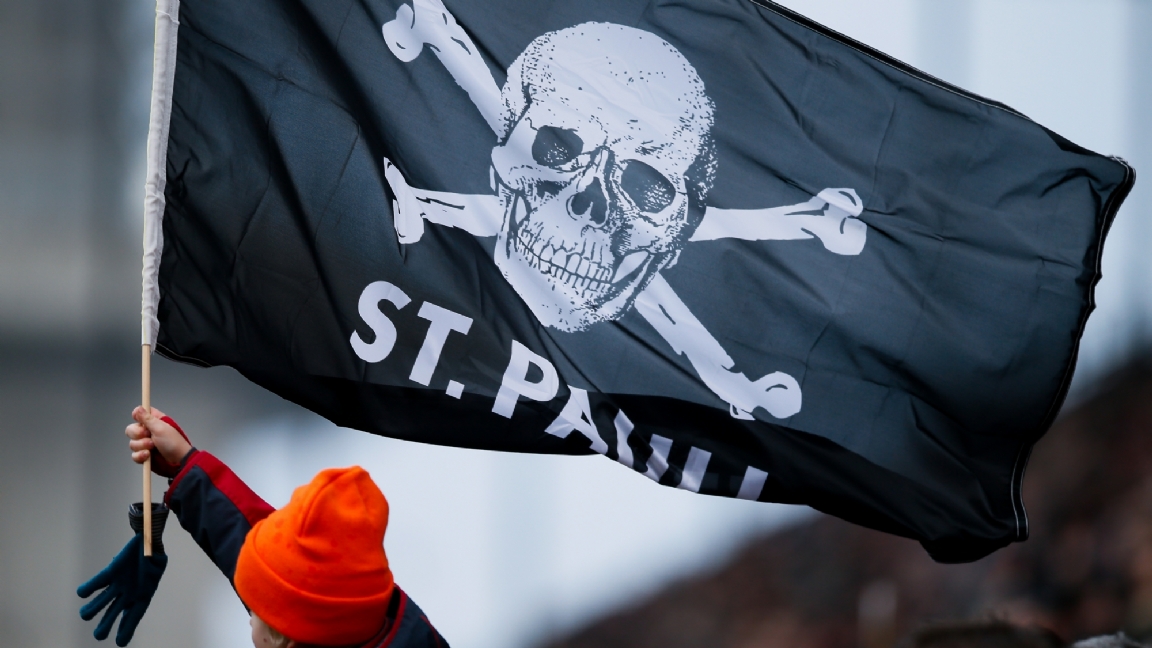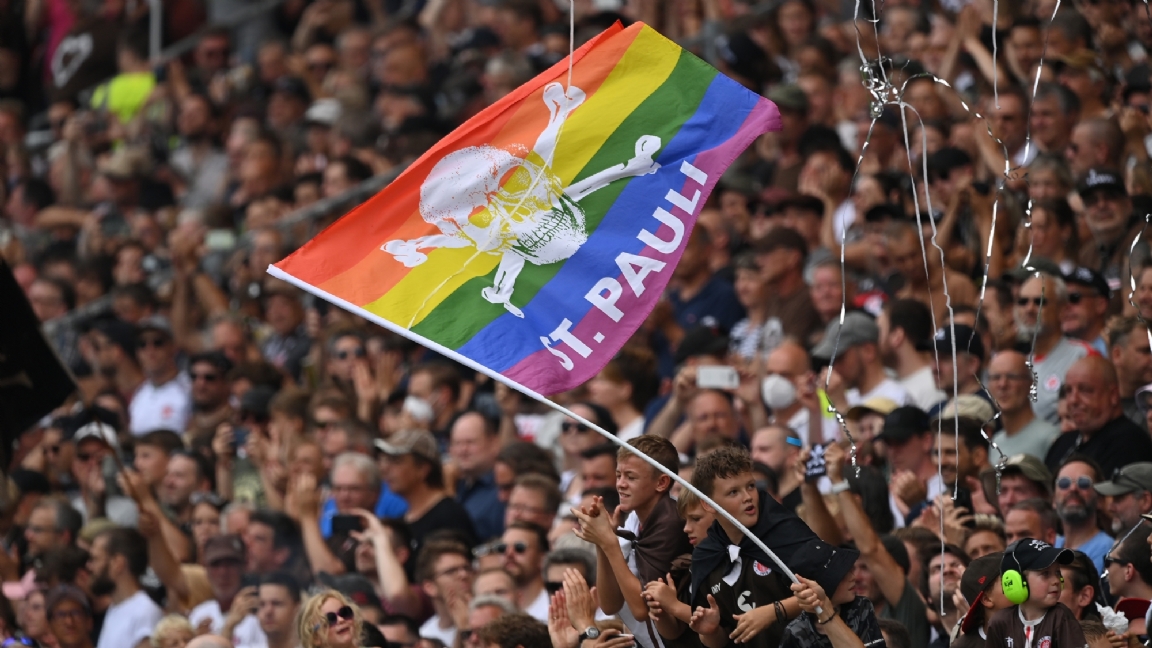![]()


In the shadow of football temples, billion-dollar balls and megalomaniac takeovers, clubs live on the margins. Where the enthusiast is still courted with history, character and sincere romance. For the section Cult clubs is reading Football zone from the fairy tale books of the football library. In this edition: FC St. Pauli, host of the only football stadium in the world where football is an afterthought
”I won’t take no prisoners, won’t spare no lives. Nobody’s putting up a fight. I got my bell, I’m gonna take you to hell.” The visiting teams and their supporters will hear this before the start of the match Fussball Club St. Pauli from 1910. Dan reads Hell’s Bell’s from AC/DC through the Millerntor stadium. The streets of the Hamburg district of Sankt Pauli will then be largely empty, because usually all 29,546 places in the Holle of the local cult club. Since its opening in 1963, this oversized football canteen has moved with the times several times, but the identity of St. Pauli has remained untouchable. Sponsors are therefore virtually invisible in the home base.
Pirates of the football world
That conservative attitude is in stark contrast to the core values of the club. The message “Welcome to Hell” doesn’t sound like an accessible place, but nowhere are the doors wider than in Millerntor. The progressive supporters group is known for its left-wing character. The stands are colored by rainbow flags and anti-fascist, sexist and racist banners. Texts like ‘Kin Mensch is illegal’ and Kein Fussball den Fascisten’ show that the club does not go along with the hostile culture of many a football stadium. Albeit in hell, everyone is welcome here.

Activist slogans can invariably be read in the Millerntor stadium.
That activist mentality grew within the club in the mid-1980s. When a large group of supporters of the left came to consider the Millerntor as their home. This free-spirited crowd could often be found around the entertainment area in the Reeperbahn. The long stretch in Hamburg that acquired its status because of her red light district, nightclubs and casinos. Around the same time, Europe was engulfed by a wave of extremist hooliganism, in which violence and aversion to ‘the other’ were supposed to reinforce one’s own identity. FC St. Pauli, however, takes a different course. Like pirates, they turn away from the majority to lead a wayward life.
It is therefore not surprising that the ‘second logo’ of St. Pauli is a real pirate flag: black with a white skull. At first glance, not fitting with the welcome atmosphere in the stadium, but all the more the symbol for the unique values within this club. The legend goes hand in hand with Doc Mabuse, singer of a local Hamburg punk band. The year is 1981. On his way to a match of his club, he gets the inspiration to take a pirate flag from a small, alternative shop. Like an adolescent comes home with a traffic sign. The flag becomes a hit with fans, who even set up an independent St. Pauli fan shop in 1989, where of the Totenkopf adorns the articles.

The pirate flag with skull has been renamed by club and fans as the second logo.
The football association only recognized the commercial values of the alternative club logo years later. It therefore buys the property rights of the symbol to make millions later on. It is still considered a sin by the old guard of the fans, how this bohemian club was seduced by the greed of capitalism. The identity was re-established when in 2009 FC St. Pauli became the first football club in Germany with established principles of how the club should be run. “These values put social responsibility and interests of members, employees, supporters and volunteers above the realm of sport itself; tolerance, respect and social responsibility,” reads the official website of the German Bundesliga. Like pirates at sea, people take care of each other. Especially when no one else is doing it. As a result, the club is known as ‘football home for the people without a home in football’.
FC St. Pauli has been advocating for minorities, refugees and the LGBTQ community for decades. The fan base contains more women than any other German club. The stadium even includes a nursery, where the Ultras-to-be overlook the grandstand. Former chairman Corny Littman, the first openly gay chairman in Germany, once had to listen to numerous homophobic slogans during an away game. At the second leg in Hamburg, the away supporters could look out on a stadium filled with rainbow flags. The same stadium protested against men’s magazine Maxim for their sexist images of women.

The rainbow flag for inclusivity is now also part of FC St. Pauli’s furniture.
It’s just a game
Despite the worldwide cult status, the club cannot match that with much sporting success. At the opening of the Millerntor stadium in 1963, St. Pauli was not yet allowed to participate at the highest level. Only one club per city is admitted to the Bundesliga. The choice falls on bigger brother HSV. The Kieskicker, as St. Pauli is also called because it is located in the Kiez district, were allowed to join German professional football in 1974. Three years later (1977) it was promoted to the Bundesliga for the first time. But unfortunately, as would be the case more often in the future, it is immediately relegated from that competition the following year. Ultimately, 1988/89 is the most successful season, when FC St. Pauli finished tenth in the Bundesliga.
Although sporting success is not forthcoming, the real success of the club lies in the social aspect. This so-called Social Romantics have more than 200 fan clubs worldwide. The name of FC St. Pauli is invariably mentioned with the word cult club and almost every medium has written about this figurehead. St. Pauli shows that there is a place in football for everyone, regardless of origin, preference or ability. Football is also the most important sideshow in this stadium, only there is a line under the word sideline. The club is world famous. Not by conquering the world overseas in their brown uniforms, but by moral piracy within the sport: social involvement and political activism. Because football… that’s just a game.